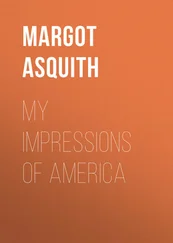The racial formation perspective helps explain trends that assimilation theory either cannot or that it overlooks. For instance, even as more minorities appear on television, they remain in often stereotypical depictions (Davé, Nishime, and Oren 2005). People’s attitudes about race might have become more benevolent, therefore supporting assimilation theory assumptions about a merit-based United States, but that does not mean that minorities have ample opportunities. The US prison population has become overwhelmingly black and brown compared to the general population, for example, and not because those populations started committing more and more crime (Alexander 2010). Meanwhile, even as Asian Americans and Latinxs have become more welcome within urban development, welfare laws discriminate against immigrants (Fujiwara 2008). Nor is this mistreatment relegated to poor immigrants. Wealthy Asian Americans experience barriers to full inclusion due to racist and/or culturally prejudiced attitudes from the majority. Even when Asian Americans achieve, they experience a white supremacy in their residences, school systems, and elsewhere (Cheng 2013; Dhingra 2020). According to this perspective, middle-class Asian Americans are “a part” of the mainstream but “apart” from it (Kibria 2002a).
The “model minority” stereotype exemplifies this dynamic. It argues that Asian Americans succeed due to their Asian values of hard work and family support. In fact, Asian Americans’ success in schools and workplaces may be due in part to such racial stereotypes rather than a sign that stereotypes are fading (Dhingra 2007; Lee and Zhou 2015). But within this stereotype Asian-American men and women are characterized as sexually deviant (i.e. Asian-American men are figured as effeminate; Asian-American women as hypersexualized), overly passive, and apolitical. The stereotype is premised on anti-blackness, that blacks are inherently undeserving and prone to social problems. White elites within the capitalist structure benefit the most from this institutionalized discrimination. According to the racial formation perspective, a lack of equality for immigrants is not their problem but that of the state and institutions, which promote inequality.
The broader theme within the racial formation perspective is a lack of trust in the nation-state and its institutions to promote full equality among racial groups. The United States, like other western, hyper-capitalist nations, is neither the “land of opportunity” nor even a benign force relative to ethnic minorities. Instead, according to critics it is an imperial force that wages wars mostly in Third World nations and also engages in business practices that suit established interests more than minorities at home (Melamed 2006). Moreover, the racial formation perspective recognizes that from its inception, the United States has been a country that was founded on white supremacist rationale. The fact that naturalization, for example, was restricted to whites, or that slavery was actually permitted in the US Constitution, is evidence that race has organized American society. Even when these laws have changed, it is because of struggles by minorities and/or in response to US foreign and economic interests and without fully eradicating racializing logics. Immigrant minorities may do well economically, but they must suffer from greater hurdles and indignities en route. For instance, Filipinx-American men have attained a moderate middle-class status through working for the US navy. But they can be relegated to subservient, emasculating positions in the process (Espiritu 2003).
A racial formation perspective also helps explain how immigrant minorities respond to racist interactions. Asian Americans, even those raised in the United States, accentuate their cultural and social commonalties to one another rather than their ties to the mainstream (Dhingra 2007; Purkayastha 2005; Tuan 1998). Even if ethnic minorities live in mostly white neighborhoods, they often seek out one another for solidarity. People identify with their ethnicity rather than as simply “American.” These trends contradict assimilation predictions.
The growing pan-ethnicity among Asian Americans serves as another challenge to assimilation theory. Pan-ethnicity refers to Asian Americans’ increasing collaboration and identification along racial rather than only along ethnic lines. As pan-ethnicity occurs, identities can change, with a new group (i.e. “Asian American”) forming. Pan-ethnicity can result from a shared racial formation among ethnic groups but also from a sense of cultural connections, and so is not reducible to racial formation. Asian Americans identify pan-ethnically due to a shared culture (e.g. Confucian heritage), shared categorization by others (e.g. stereotypes of “Asians” as all foreigners), shared institutions (e.g. pan-ethnic student organizations that promote this identification), and shared interests (e.g. to eradicate racism). Understanding why pan-ethnicity happens, when it takes place and does not, and how strong it is informs the process of group identity formation more broadly.
Online resources: Learn more about race at https://www.britannica.com/topic/critical-race-theory; https://medium.com/@RedSummitProductions/fresh-off-the-boats-battle-with-stereotypes-and-sitcoms-9b4299dfc29
The increasing inter-dependency between countries also complicates immigrants’ adaptation. Globalization refers to the connections between nations economically, culturally, politically, and socially. For example, the fact that we learn about what is happening on the other side of the planet instantaneously through the internet, or the fact that most of the products we buy are made in another country, is evidence that our lives are being shaped by forces beyond our country. A global political economy perspective draws attention to the relations between nations that spur migration (Baldoz 2011). Because developing countries do not have enough employment opportunities for their population, or the jobs pay too little or lack options for mobility, individuals seek fortunes elsewhere. But individuals rarely just migrate anywhere. One’s country’s relationship with other nations influences where one migrates to. For instance, colonial histories between countries create lasting pathways of immigration. Also, to develop their economies, countries will train citizens for jobs in other countries. Migrants are then expected to send back money or expertise to their homeland (Rodriguez 2010). Would-be migrants hear of jobs in a particular country through state- or corporate-sponsored advertisements or through their personal networks. In other words, to understand immigration, one must understand the relationships between nations.
A global political perspective downplays the assimilationist model of immigration and adaptation. Assimilation theory frames migrants as independent actors who seek out a new country to make their living and settle their families. In contrast, a global political economy perspective highlights the sustained ties between migrants and their homeland. Immigration is not so much an act of pure volition as a consequence of global economic and political factors, within which immigrants make calculated decisions. Within this perspective, it makes sense that immigrants maintain transnational ties to their homeland. Transnationalism originated as a topic of study as a critique of assimilation theory’s assumption that one’s adopted nation defined immigrants’ subjective and material experiences. Instead, immigrants can live across borders. For instance, they may both receive and send money from and to a homeland, follow the political and cultural changes of the nation, visit home often, and more. Rather than consider immigrants’ adaptation relative to the United States, as is the case within assimilation theory, it may be more relevant to consider it within a broader diaspora or widely dispersed community.
Читать дальше












